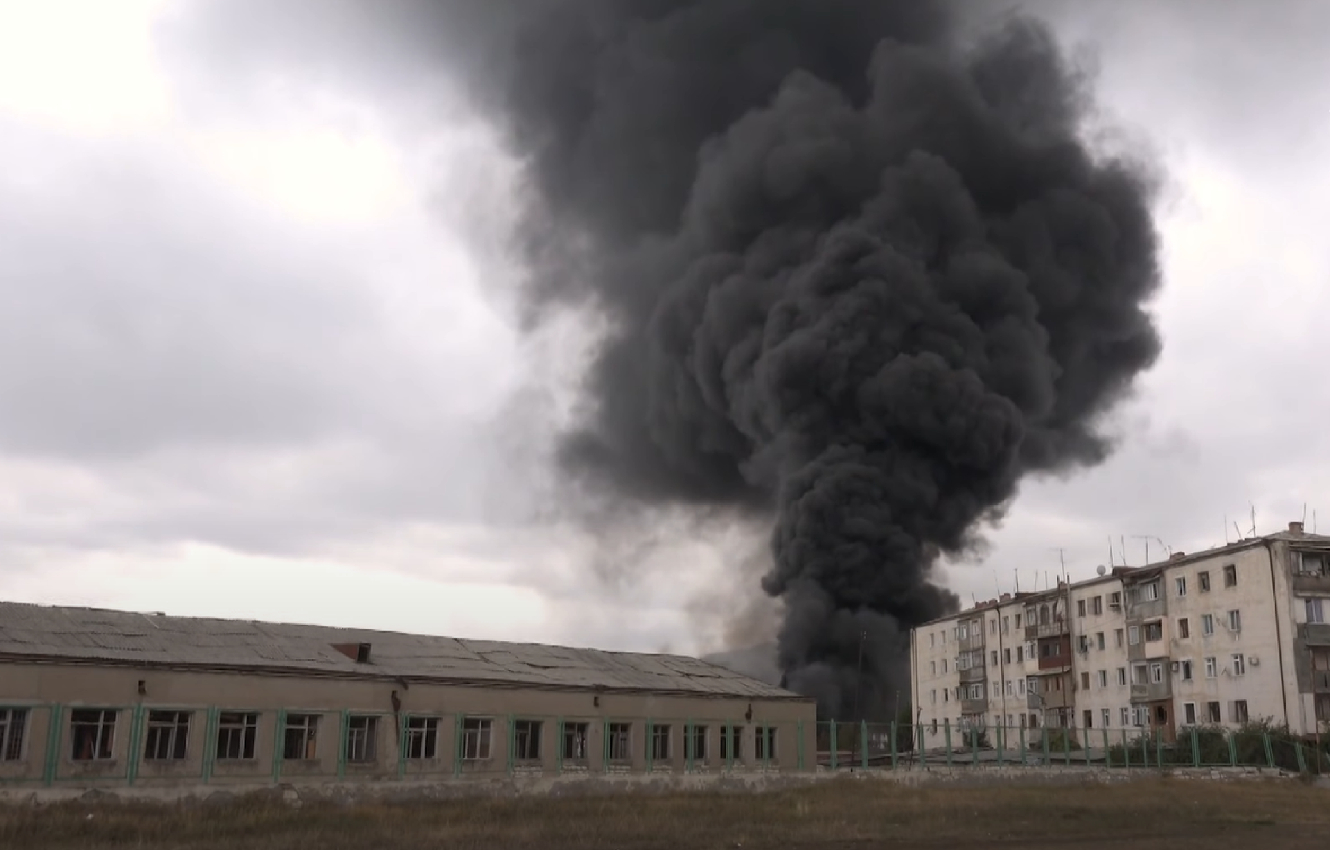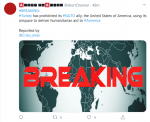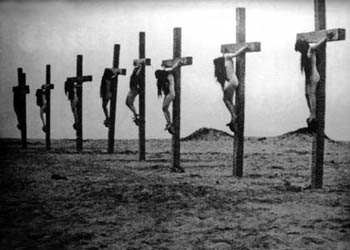continued.. . ..
Day six began to show some exhaustion among both sides, but by this point, Azerbaijan had begun shelling Stepanakert, the capital of Nagorno-Karabakh, with 300 mm multiple launch rocket systems. Additionally, Azerbaijan used an Israeli-made LORA tactical missile to destroy a bridge on the way from Armenia to Karabakh. Azerbaijani forces sought to target Armenian ground lines of communication to prevent the deployment of reserves and stall counteroffensives. Armenians forces began firing against infrastructure in Azerbaijan, using BM-30 Smerch 300 mm multiple launch rocket systems to hit the airport of Ganja about 60 kilometers away from the Armenian border, and using tactical missiles as well. Both sides have been trading rocket artillery strikes since, targeting critical infrastructure, and inflicting civilian casualties, using systems that could range the entire theater of operations.
On the morning of day seven, Azerbaijan’s First, Second, and Third Army Corps (most of its units are located on the Armenian border) were reinforced by the reserves of the Fourth Corps, which protects the Absheron Peninsula and Baku. The Azerbaijani attack knocked Armenian forces from their forward positions in the north and may have temporarily seized the border settlement of Mataghis. It is unclear who possesses Mataghis at the time of this writing. Azerbaijan’s leadership has regularly reported capturing settlements which they had not in fact captured. The eighth day of the war was marked by further shelling of Stepanakert, the capital of Nagorno-Karabakh, and Armenian strikes against targets in Azerbaijan.
Much of the fighting has shifted to the south, as the war in the northern regions proved costly, but resulted in few gains that could be declared as victories by either side. Azerbaijani offensives proceeded in the direction of Jabrayil and Fuzuli, near the Iranian border. Subsequent days of fighting focused on this region, and Azerbaijani forces briefly captured Jabrayil, but were partially enveloped. They seem to control the town as of this writing, but Armenian forces hold the mountains beyond this point. This territory is relatively flat and unpopulated, making it the most likely place where Azerbaijan’s forces could make progress. Azerbaijan’s army controls a stretch of terrain in the south, recapturing territory that has long been held by Armenian forces as a buffer zone. However, this advance has also stalled, and there were also signs that several thousand Azerbaijani troops were partially surrounded in Jabrayil given the canalizing terrain.
The war has not resulted in dramatic turnovers of territory, and has proven costly for both sides, expending manpower, munitions, and materiel. It is not clear if what Azerbaijan has gained so far — a strip of land in the south largely along the Iranian border — will suffice as a political victory for Azerbaijan’s leader, Ilham Aliyev. All together Azerbaijan may have captured 2.8 percent of the territory of Artsakh. At this stage the conflict may settle into a position war of attrition, but a genuine ceasefire is not on the horizon. Azerbaijan appears to have the capacity to destroy Armenian ground forces from the air, largely thanks to its unmanned aviation, but at the end of the day, only ground forces can seize and hold terrain. Tactical successes have not yielded a notable operational or strategic victory, and Baku’s path towards achieving political objectives via the battlefield remains unclear.
Although fighting has reached Armenian-populated towns, like Hadrut, there is little evidence that Azerbaijani forces will make tremendous progress in the coming weeks based on observable performance. Armenian forces have suffered significant losses. These have been largely due to airpower, both in fixed positions (which were ill prepared against air attack) and when maneuvering for counter offensives. However, the Armenian drone campaign was not a systematic suppression or destruction of Armenian air defense. Instead it appears to be an adaptation resulting from lack of progress in the early days of the fighting.
Battlefield realities will drive ceasefire negotiations. This will undoubtedly depend on their expectations of diplomatic, political, or military support from other parties such as Turkey or Russia, as well as external political pressure. Overall, Azerbaijan is much better positioned in a sustained war of attrition, and even if there is a ceasefire, Baku may re-arm and launch another offensive in some time, which will eventually exhaust Armenia’s military. Moscow has made clear that its alliance with Armenia does not extend to territories held outside the country, i.e., Nagorno-Karabakh and outer lying regions held. Consequently, Russia will not intervene unless the war becomes an existential contest.
Implications for Modern Warfare
The information war has been just as fierce as the actual war, with both sides posting daily combat footage to proclaim victories on the battlefield. Disinformation and propaganda, spread through official and unofficial accounts, have made it difficult to objectively assess the course of combat thus far. Furthermore, the relative accessibility of combat footage — whether from drones, cellphones, or cameras — paints a stylized picture of the battlefield for any analyst. They are official propaganda, and it is worth noting that on the modern battlefield, some systems have cameras or live video feeds, while many do not, distorting perceptions on combat effectiveness. A social media feed composed largely of drone video footage could lead one to believe in the dominance of such systems, even in a conflict where many casualties are still inflicted by armor, artillery, and multiple launch rocket systems. This tactical footage has led to familiar debates on the
utility of tanks, the prowess of drones on the battlefield, or
the proliferation of sensors.
There is a thirst for drawing lessons from contemporary conflicts that feature modern weapon systems. However, the result is often generalizing from a few cases, and at times, learning things that are not true. What can be discerned from this war is hardly revelatory. Remotely operated systems offer the utility of tactical aviation, close air support, and precision guided weapons to small nations, and to even relatively poor countries, for a cheap price. They saturate the battlefield with disposable sensors, shooters, and sensor-shooter packages in the form of loitering munitions. Notably, they enable precision artillery and strike systems to engage fixed positions, as has been seen across modern conflicts from Ukraine to Syria. Furthermore, tanks are vulnerable to counters, as they always have been, but it is unclear what other vehicles offer a better combination of firepower, protection, and maneuverability on the battlefield.
The war illustrates that in an offensive, or counter-offensive, the only thing worse than being in a heavily armored vehicle is being outside of one. If anything, the tank appears to be the most survivable vehicle, given the small warheads on drone carried munitions. These munitions often disable or mission kill the vehicle, but the crew can still survive anything other than a direct hit. Much of the hand-wringing in Western circles that comes from watching these conflicts stems from the epiphany that there is no way to avoid casualties on the modern battlefield, especially among an expensive force, replete with boutique capabilities that cannot be lost in large quantities. Furthermore, the ratios of support to maneuver units are important. Compared to forces like the Russian military, Western ground units feature poor availability of air defense and electronic warfare, and the expectations that existing air defenses or tactical aviation may be easily adapted to counter unmanned systems are probably unfounded. Armenia’s performance illustrates this problem. Drones are relatively cheap, and this military technology is diffusing much faster than cost-effective air defense or electronic warfare suitable to countering them.
That said, Azerbaijan’s unmanned air force has been operating against an opponent with incredibly dated short-range air defenses which are neither suitable nor effectively employed to defend against drones. Armenia does not have layered air defense, effective electronic warfare, or a large amount of tactical aviation. It has situated its air defense systems in relatively exposed fixed positions, in a mountainous region where air defense is even more difficult by virtue of the terrain. In truth, both sides are demonstrating tactical deficiency in their offensive and defensive tactics. While attaining some kills using optical sights, Armenia’s modernized Soviet systems (essentially technology that dates back to the early 1970s) were never meant to engage combinations of small drones, loitering munitions, precision artillery, or unmanned combat aerial vehicle systems. More advanced air defense capabilities like Tor-M2s are few, and have been intentionally held in reserve, although Azerbaijan has been reticent to use its fixed wing or rotary aviation. Armenia’s older S-300PS systems appear to have had no role in the conflict, and some launchers may have been destroyed early on, having never even been deployed.
The lessons from this conflict are consistent with those of other wars in the latter 20th century: It is much better to have a smaller ground force that is well defended from the air, than a vast armored force that is completely exposed to sensors and airpower from above. Well prepared defenses, if insufficiently protected or camouflaged from the air — which is increasingly difficult — are naturally vulnerable. The diffusion of remotely operated systems will outpace that of air defenses or specialized counter-drone systems, rendering older generations of air defense largely obsolete. Drones and loitering munitions will be, for some time, cheaper to acquire than the requisite defenses. And one can distribute forces, but they should be concentrated for assaults. There is no way getting around canalizing terrain, at least not until the battlefield features hover tanks. That tanks are vulnerable to anti-tank weapons should come as no surprise, but other vehicles, which trade survivability for maneuverability, seem to fare no better against anti-tank guided missiles. Vulnerable or not, it is unclear what other vehicle can achieve the tank’s mission on the battlefield.
Finally, fetishizing combat video feeds plays to a Western intellectual preference for the tactical, and system on system evaluations, while ignoring the basic fact that Azerbaijan has not been able to attain a significant operational success. This perhaps is the most important lesson of the conflict: Tactical successes, which may appear impressive, can fail to add up to an operational breakthrough. In such cases, military strategy turns to the old familiar: a battle of attrition.
Michael Kofman serves as director and senior research scientist at CNA Corporation and a fellow at the Wilson Center’s Kennan Institute. Previously he served as program manager at the National Defense University and a nonresident fellow at Modern War Institute at West Point. The views expressed here are his own.
Leonid Nersisyan is a military analyst based in Moscow, who serves as editor of New Defence Order
. He has written extensively for defense publications and is a regular contributor at Janes, Shephard Media, and Regnum
Azerbaijan and Armenia have now spent more than two weeks at war, with casualties mounting on both sides. On the morning of Sept. 27, Azerbaijan launched
warontherocks.com












